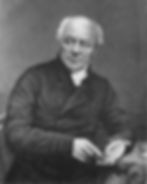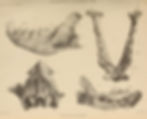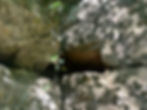A Hyena Den in North Yorkshire! – The Secrets of Kirkdale Cave
- timbarber
- Aug 8, 2025
- 4 min read
Updated: Aug 10, 2025

Walking near Kirkdale, just outside Kirkby Moorside recently, I had to go and find the famous Kirkdale Cave from which bones found back in the early 1800’s led to huge advancements in understanding Britain’s geological past.
I had read about the finds in a great book about Yorkshire geology called The Floating Egg and how the celebrated geologist William Buckland had reached some astonishing conclusions.
My wife and I found Kirkdale Cave in a small limestone quarry within a wood about 5 minutes walk away from the historic Saxon St.Gregory’s Minster with its Scandinavian sun dial.

We walked down a slope and traversed the quarry side to where a large horizontal hole exists which you can just about step up and see inside.


Caves are often found in limestone rocks due to their natural bedding and the rock being prone to erosion from rain eroding the cracks, eventually causing collapse to form cave systems. When Kirkdale Cave was found originally the narrow cave went back over 175m, but this was extended much further to 437m in 1995 by Scarborough Caving Club.

The story of the cave and its finds are a fascinating one. Back in 1821 some workmen mending a local road near the quarry discovered the cave entrance and ventured inside. They found lots of bones which they just assumed were cattle who had died of disease and been dumped in the cave.

Many of the bones were collected and word about the find reached Oxford University and William Buckland, the first Professor of Geology there. Intrigued he arrived at Kirkdale Cave and started to examine the bones.
This is where the finds opened up a mystery – Buckland recognised that the majority of the bones appeared to come from hyenas. Not only that but there were also bones that he instantly recognised as coming from straight tusked elephants, hippopotamus and narrow nosed rhinocerous. Many of the bones also had evidence of teeth and bite marks.
Buckland also found a number of small white balls in the cave which he sent to William Wollaston, a London chemist for analysis. He reported back that the balls were droppings very similar to modern day hyenas. William Buckland concluded that the cave must have once been a hyena’s den, where they bought their kills to eat.

His conclusions lead to his friend and fellow palaeontologist William Conybeare creating the illustration below.

This light-hearted reconstruction of the hyaenas’ den shows Buckland illuminating the scene, in every sense. It is thought to be the first visual reconstruction of the pre-human past.
His theory was also supported when he compared teeth marks from modern day hyenas fed at a traveling menagerie which had visited Oxford that year, these matched the marks shown on the other animal bones found in the cave.

But now came the difficult part for Buckland. It was difficult to explain how these exotic animals, now found much further south in warmer climates had come to be found in a cave in Yorkshire?
Immediately many people backed the churches explanation that the bones must have been washed into the cave during Noah’s flood. But Buckland wasn’t for buying this theory. He saw that the entrance to the cave was not big enough to have washed some of the animals like hippos into the cave.

Instead he was convinced that there had been periods of warmer weather between ice ages known as inter - glacials. He believed that the animals had lived in Yorkshire when England was joined to Europe at a time when the climate was much warmer and sustained the sorts of animals now found in Africa.
As science has progressed Buckland’s conclusions have been proven through carbon dating and a greater geological understanding of timeframes. There was a warm period approximately 115,000 – 130,000 years ago between the last two ice ages. It was known as the Eemian Interglacial and we now know through many other finds that animal such as lions, bear, hyeana and hippos roamed the North of England.
You may want to read my blog on the Armley hippos! https://www.realyorkshireblog.com/post/hard-to-believe-that-hippo-s-once-roamed-around-leeds
It’s amazing that in 1821 Buckland with limited scientific resource could create a theory about an ancient ecosystem from his limited evidence of the fossil record.
When he presented his findings, it helped that drawings made by Mary Morland (who later became Buckand’s wife) could bring his stories and the animals whose bones had been found to life.

Many of the bones from the find can be found in The Yorkshire Museum, York as well as The Whitby Museum, there are others to be found at The Museum of Natural History at Oxford University. Buckland was awarded The Copley Medal by The Royal Society for his paper on Kirkdale for showing how careful analysis could be used to reconstruct the earth’s past.
There is no sign or interpretive board at the site and it is very easy to miss, but I am so pleased that I got to visit and see at first hand the site of such a remarkable geological find.



